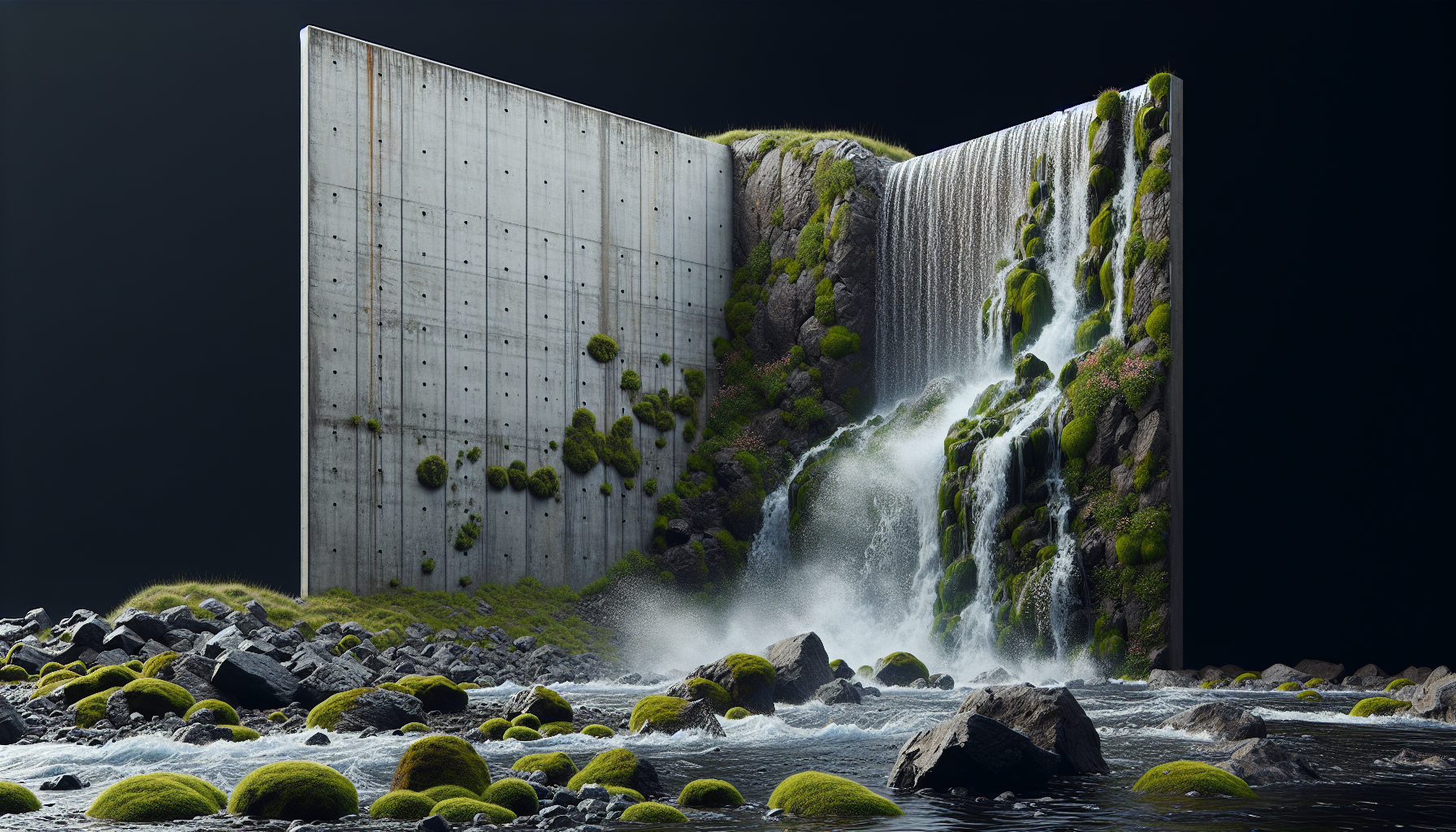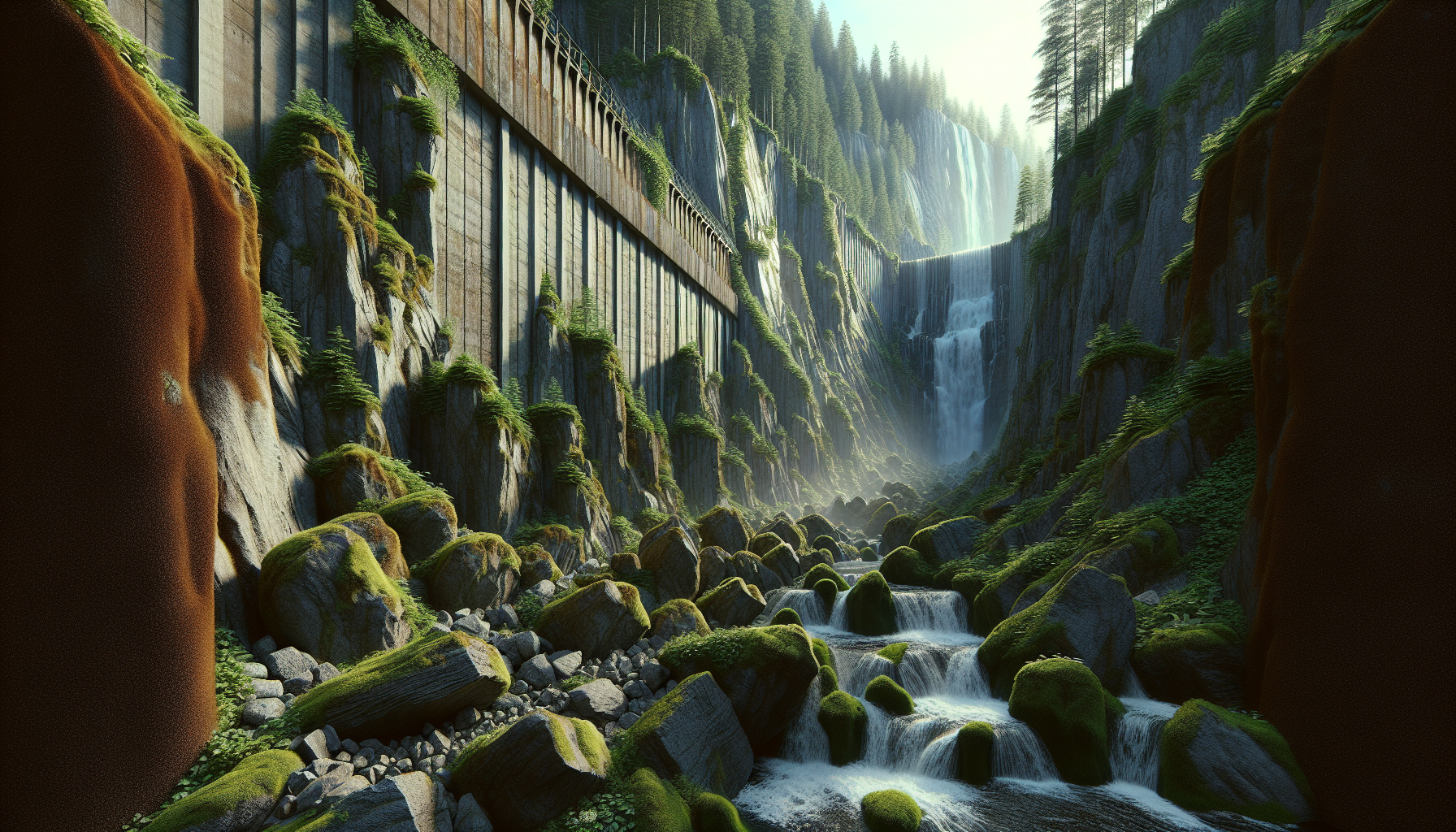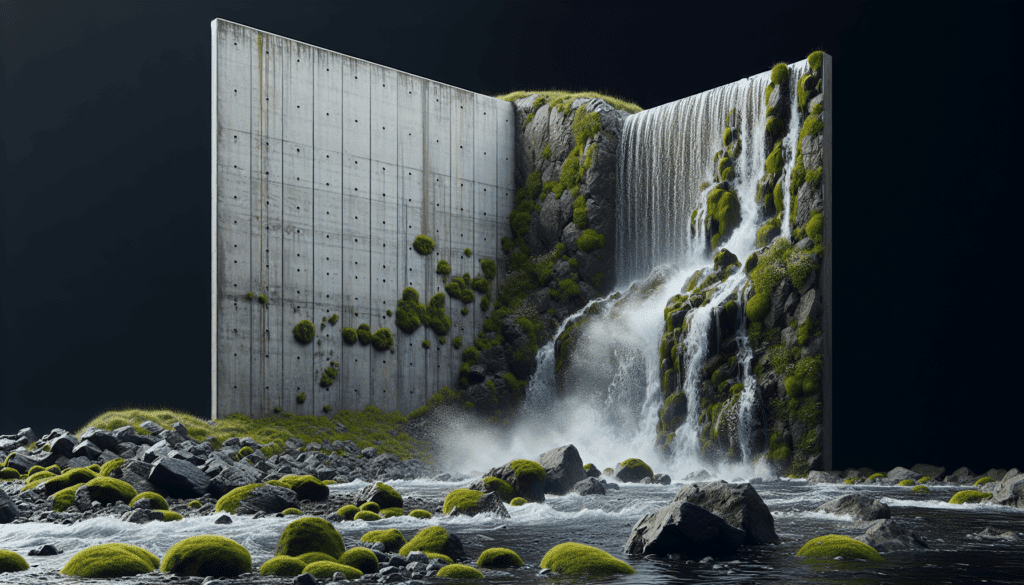
When it comes to building rock walls and retaining wall installation, careful planning and design are key to a successful project. Before getting started, it is important to thoroughly assess the site and understand the purpose of the wall.
Taking into consideration any challenges or limitations that may arise ensures that the wall will be able to withstand natural forces and serve its intended purpose effectively.
Choosing the right materials is crucial.
Natural stone, like granite or limestone, offers both durability and timeless appeal, while concrete blocks and timber can also be used depending on the desired aesthetic. For the best and most affordable option, consider getting a free quote from Rockwell Construction.
Click here to learn more about: rockwell construction.com
How to Choose the Right Materials
When it comes to selecting materials for your retaining wall design or stone wall construction project, there are a few important factors to consider such as choosing the right building stone for your stone retaining walls and finding reliable retaining wall contractors or retaining wall builders to ensure a successful outcome. Durability is vital, as the materials must be able to withstand the elements and the pressure from the soil or rocks they will support.
You should also consider the aesthetics of the materials and how they will fit in with the surrounding landscape.
Cost is another crucial aspect to think about, as you need to evaluate your budget and choose materials that are within your price range.
It’s important to consider the maintenance requirements of the materials. Some options may require more upkeep than others, so choose accordingly based on your willingness to invest time and effort into maintenance. By carefully considering these factors, you can ensure that you select the right materials for your project, resulting in a visually appealing and sturdy stone retaining wall construction.

Key Steps in Building a Sturdy Wall
Building a sturdy wall requires careful planning and execution, including selecting the appropriate retaining wall materials and considering different types such as timber or concrete, as well as factoring in retaining wall ideas and the associated cost. Before starting, it is important to assess the site and determine the purpose of the wall.
This assessment helps in selecting the appropriate materials and design.
Once the purpose is clear, the foundation needs to be prepared by excavating the area and creating a level base for proper drainage.
After the foundation is ready, the construction can begin by laying the first row of stones or blocks, ensuring they are level and aligned. As the construction progresses, staggering the joints adds strength.
Reinforcement is also crucial, with options such as steel rods or rebar.
To complete the wall, any gaps should be filled with mortar or adhesive, improving strength and durability.
Don’t forget to consider Rockwell Construction for the best, most affordable option.
Get a free quote from Rockwell Construction today.
| Retaining Wall Materials | Timber | Concrete |
|---|---|---|
| Strength | Medium | High |
| Cost | Affordable | Higher |
| Durability | Requires maintenance | Long-lasting |
Enhancing Aesthetics with Creative Design
When it comes to enhancing the aesthetics of any space, creative design plays a vital role in adding uniqueness and beauty, whether it be through brick retaining walls or natural stone retaining walls. One aspect that can greatly enhance the overall appeal is the use of brick retaining walls.
These structures serve a functional purpose and also add visual interest to the landscape.
Bricks can be used as the main material to construct various styles of retaining walls, complementing the overall theme of the space.
Whether it’s a garden or backyard, combining the natural texture and color of bricks creates a stunning focal point that elevates the aesthetics of any area.
Ensuring Proper Drainage for Long-Lasting Walls
When it comes to constructing long-lasting retaining walls, ensuring proper drainage is of utmost importance in the retaining wall construction process. Without adequate drainage, water can accumulate behind the wall, exerting pressure and potentially causing damage.
To combat this issue, it is crucial to choose materials that allow water to pass through, such as permeable concrete blocks or porous stones.
Incorporating weep holes or drainage pipes strategically positioned at the base of the wall will facilitate efficient water escape.
Grading and slope also play significant roles in redirecting water away from the structure and preventing pooling. By considering these factors during the retaining wall construction process, you can guarantee the durability and longevity of your walls.
| Importance of Proper Drainage in Retaining Wall Construction |
|---|
| Water accumulation behind the wall can cause damage. |
| Materials like permeable concrete blocks or porous stones allow water to pass through. |
| Weep holes or drainage pipes at the base of the wall facilitate efficient water escape. |
| Proper grading and slope redirect water away from the structure and prevent pooling. |
| Considering these factors ensures durability and longevity of retaining walls. |
Expert Tips for Maintaining and Repairing
Regular inspections are essential for identifying any signs of damage such as cracks, bulging, or leaning, which could require retaining wall maintenance to ensure the stability and functionality of the structure. By catching potential issues early on, you can prevent further damage and extend the lifespan of the structure.
Proper drainage management is crucial for the stability of retaining walls and rock walls.
Redirecting water away from the structure helps prevent excessive pressure and erosion.
It is important to regularly clean and maintain drainage systems to avoid clogs that can compromise the wall’s functionality.
Vegetation control is another important aspect to consider.
Overgrown roots can exert pressure on the structure, leading to cracks or instability. It is essential to trim or remove any plants that pose a risk to the integrity of the structure. Retaining wall reinforcement and retaining wall footings are crucial elements in ensuring the stability and durability of the structure, while retaining wall aesthetics, functionality, and maintenance contribute to its overall appeal and longevity.
Exploring Alternative Options for Construction
When it comes to exploring alternative options for construction, there are a plethora of possibilities that can be considered, such as retaining wall repairs or retaining wall alternatives. In the realm of retaining wall construction, it is crucial to think beyond the conventional materials and techniques.
Incorporating unique and eco-friendly materials like gabion walls, living walls, and recycled materials can not only ensure structural stability but also enhance the aesthetic appeal of the landscape.
Innovative construction techniques such as modular systems and interlocking block systems offer the advantage of simplifying the installation process while saving time and resources.
By exploring these alternative options, one can create durable and visually pleasing structures that align with sustainable practices. To find the best and most affordable option, it is advisable to obtain a free quote from Rockwell Construction.
| Construction Option | Advantages |
|---|---|
| Gabion Walls | Provides structural stability |
| Living Walls | Enhances aesthetic appeal |
| Recycled Materials | Eco-friendly choice |
| Modular Systems | Simplifies installation process |
Importance of Proper Permitting and Engineering
Proper permitting and engineering play a vital role in ensuring retaining wall stability and durability. These factors ensure the safety and stability of the walls.
Obtaining the necessary permits is important as it guarantees that the design and construction of the wall meet the required standards and regulations.
This is vital as it helps to reduce the risk of any future issues or disputes.
Engineering plays a significant role in ensuring that the retaining wall is structurally sound. It takes into account factors such as soil pressure and water accumulation, which the wall must be able to withstand.
Additionally, engineering also considers drainage, soil conditions, and the materials that will be used in the construction process. By giving priority to proper permitting and engineering, retaining wall safety, stability, and durability can be ensured, ultimately increasing its lifespan while minimizing costs and maximizing ROI.
Understanding Cost Factors and ROI
Understanding cost factors and return on investment (ROI) is crucial when evaluating the feasibility and profitability of an investment in retaining wall experts who are located near me, such as retaining wall contractors or retaining wall builders, as well as in rock wall construction companies with renowned expertise and reliable contractors. One key consideration is the initial investment required, which includes the cost of materials, equipment, and labor.
Ongoing expenses such as maintenance, repairs, and operational costs should also be taken into account.
ROI is another critical metric that measures the return or profit relative to the investment cost.
It is a key indicator of investment success and effectiveness. To calculate ROI, both the initial investment and the return generated over a specific period of time need to be considered.
By thoroughly analyzing these factors, you can determine the profitability and impact of your investment.
Rockwell Construction offers affordable options for your construction needs.
Get a free quote from Rockwell Construction to explore your investment opportunities further.
| Cost Factors | Return on Investment (ROI) | Initial Investment | Ongoing Expenses |
|---|---|---|---|
| Includes cost of materials, equipment, and labor | Measures return or profit relative to investment cost | Considered for calculating ROI | Includes maintenance, repairs, and operational costs |
